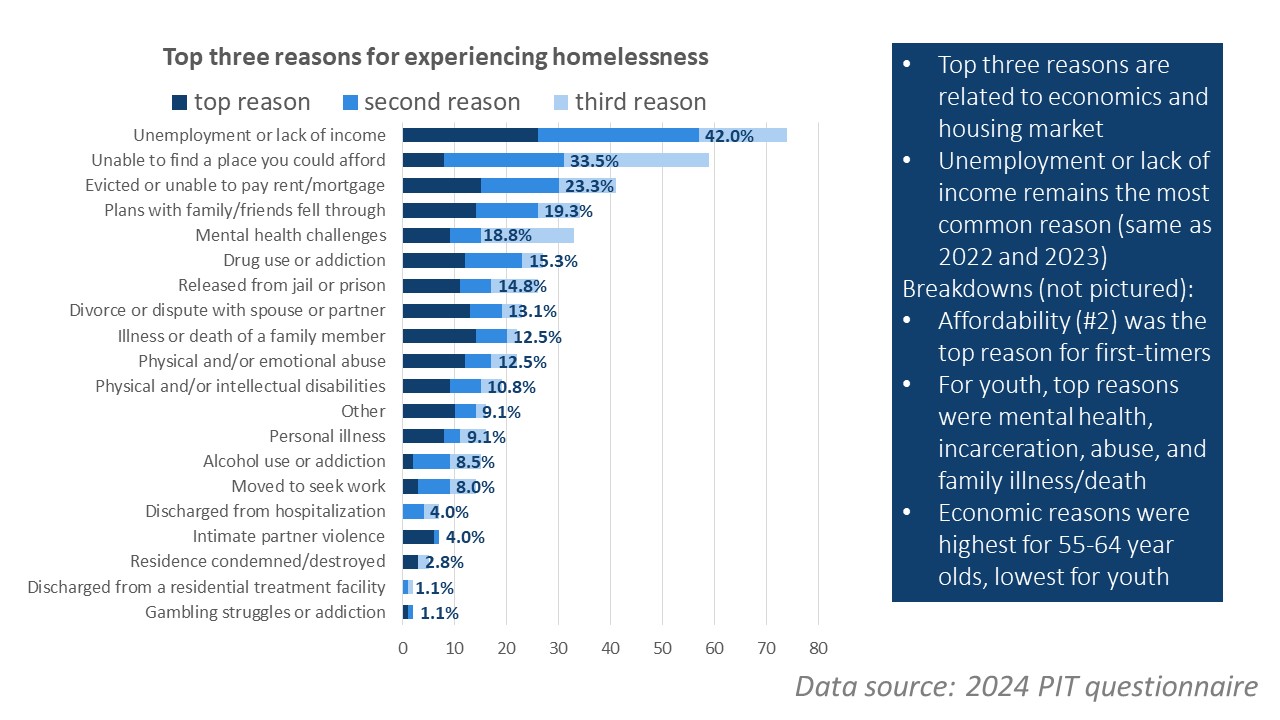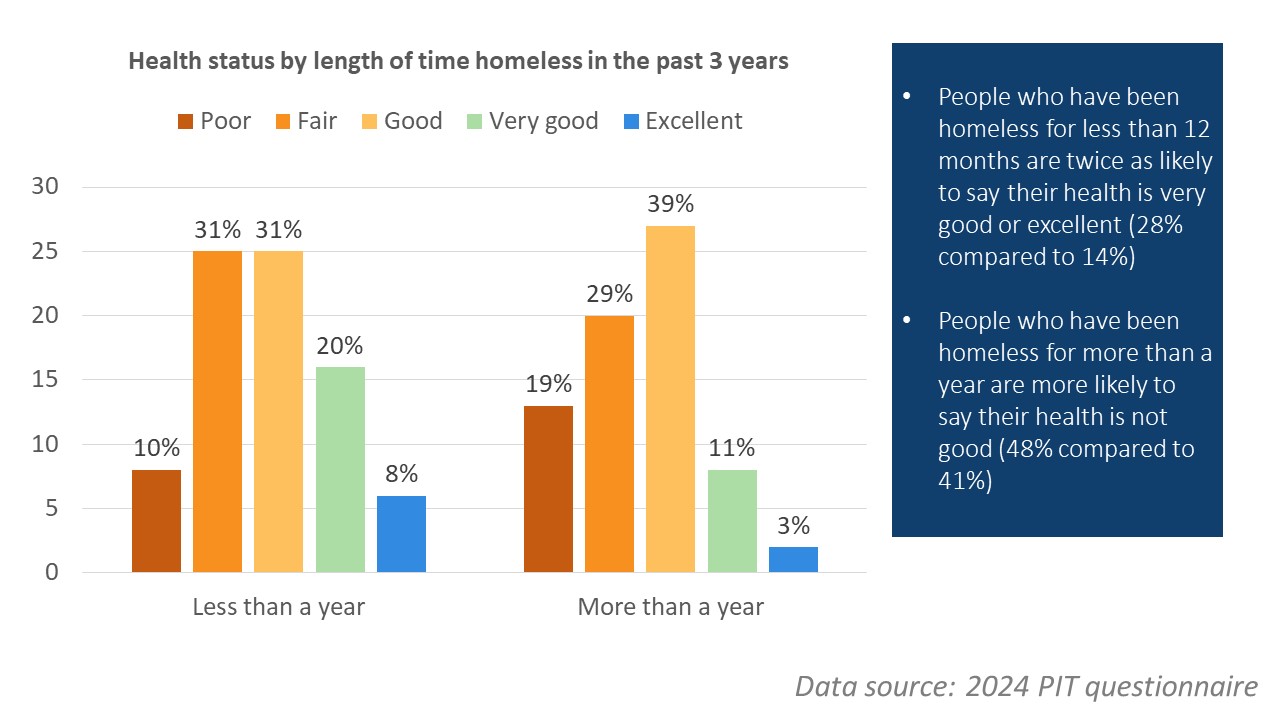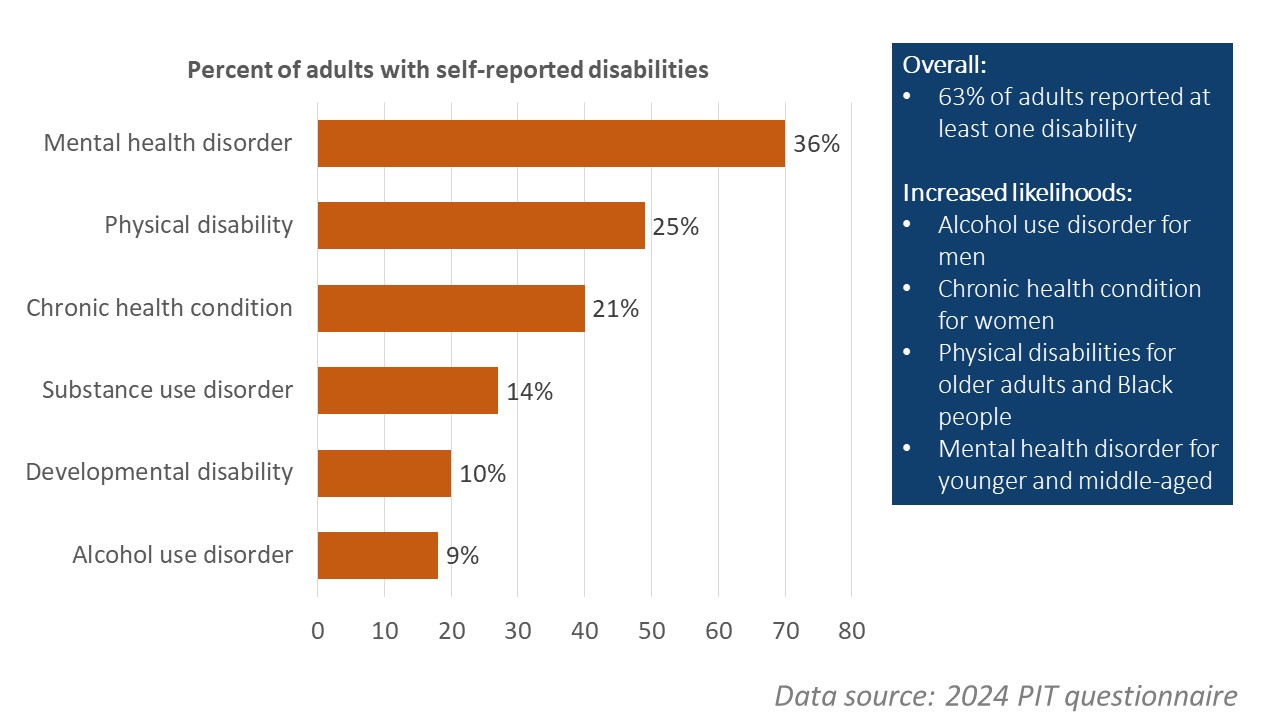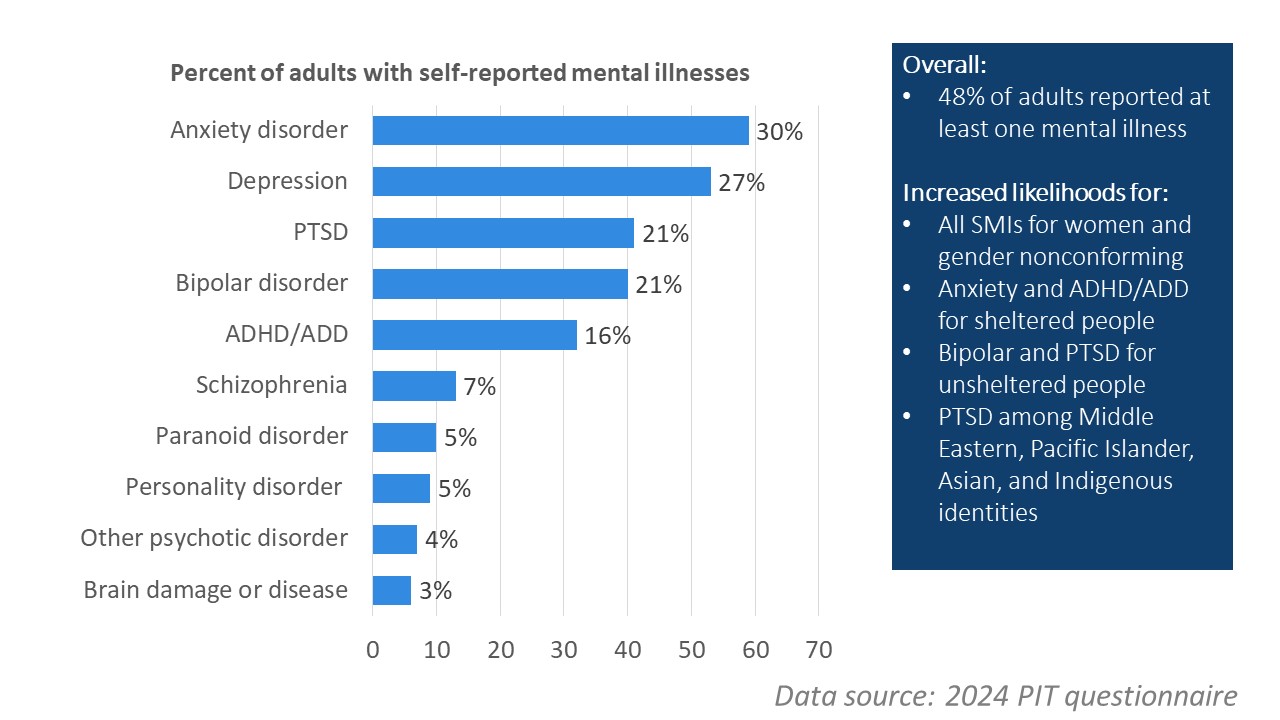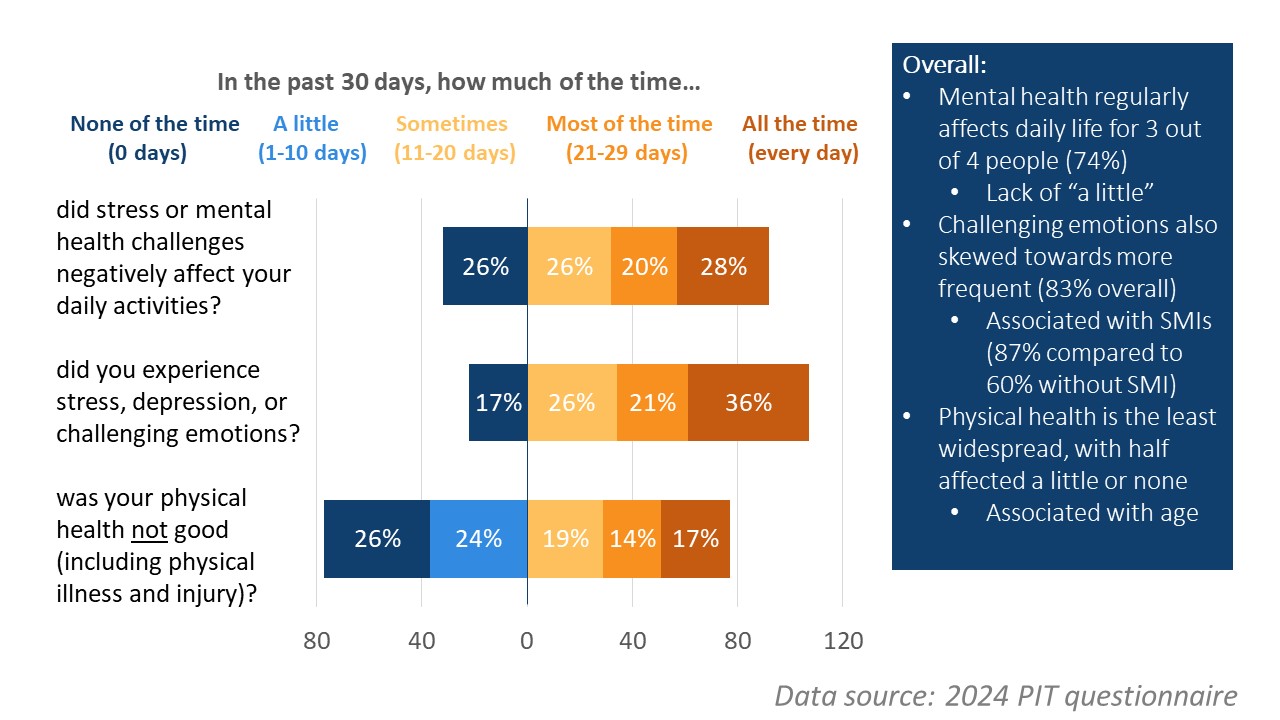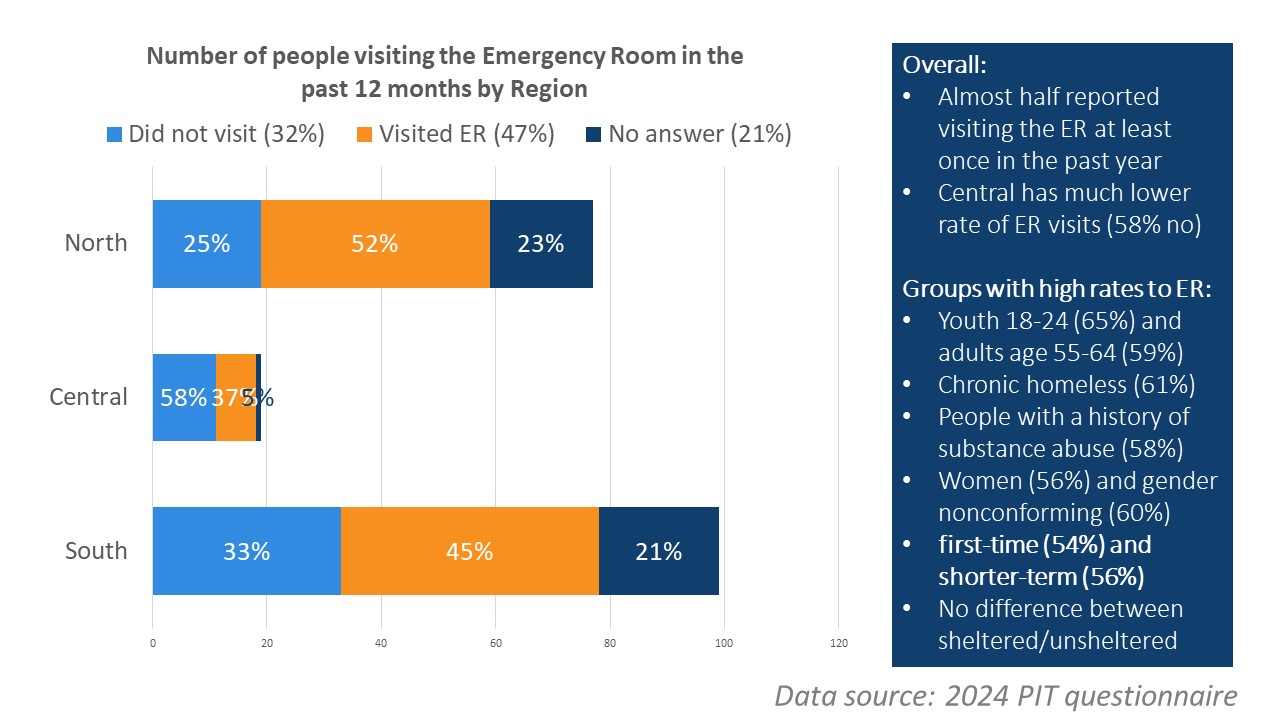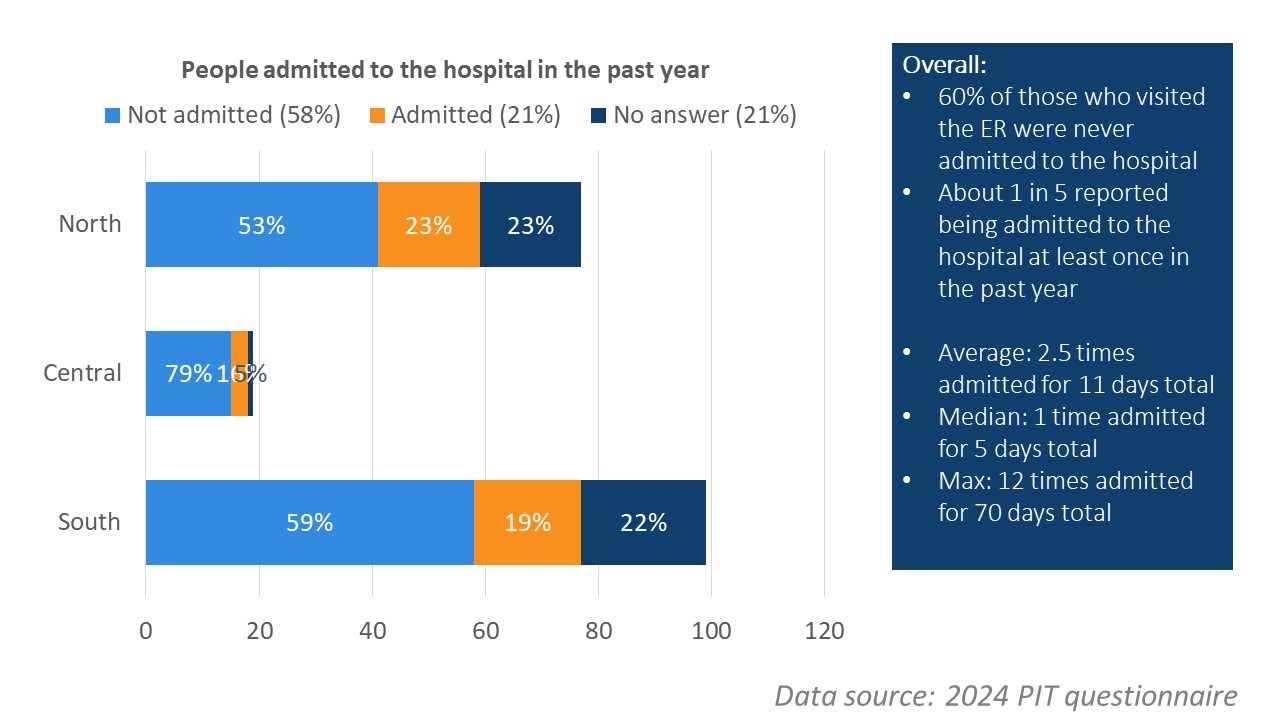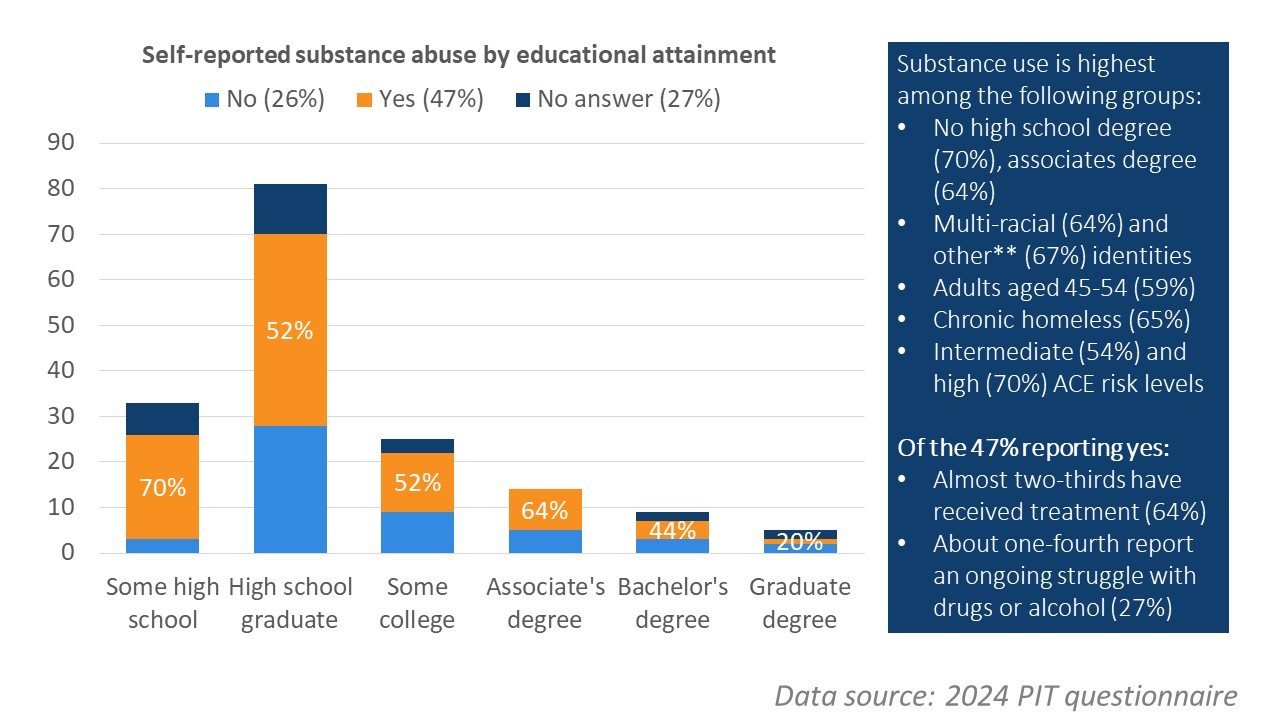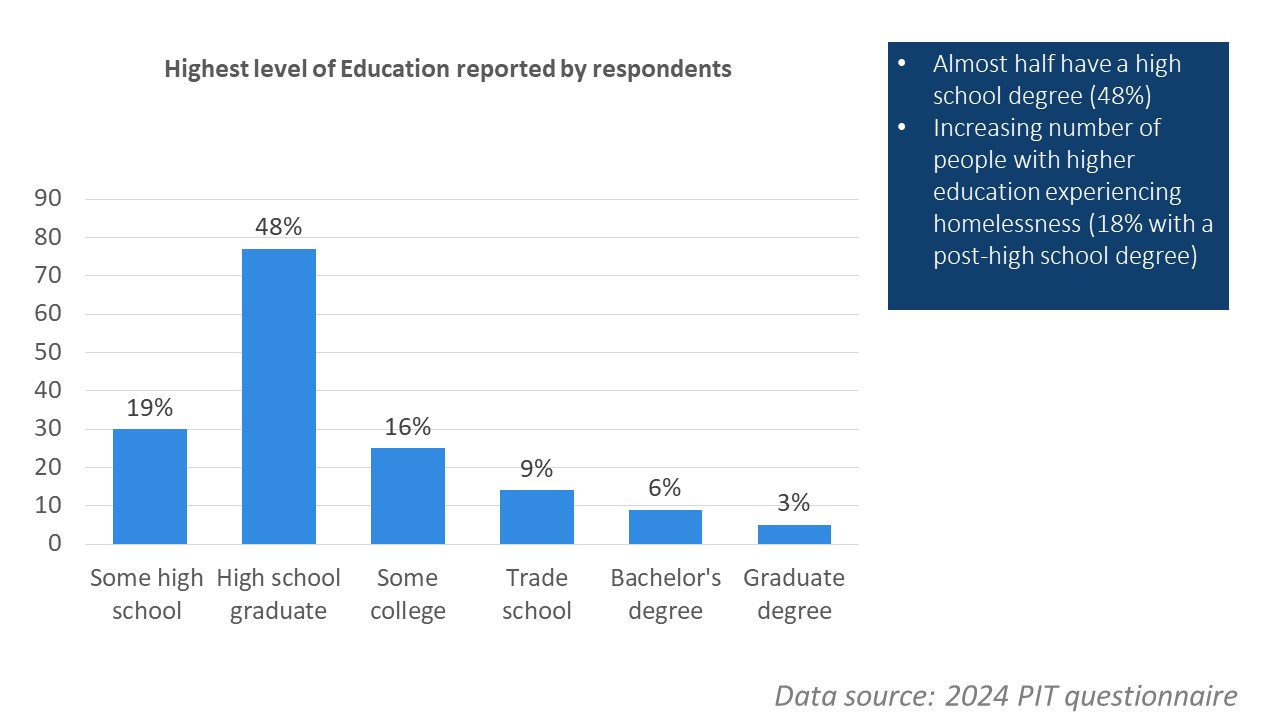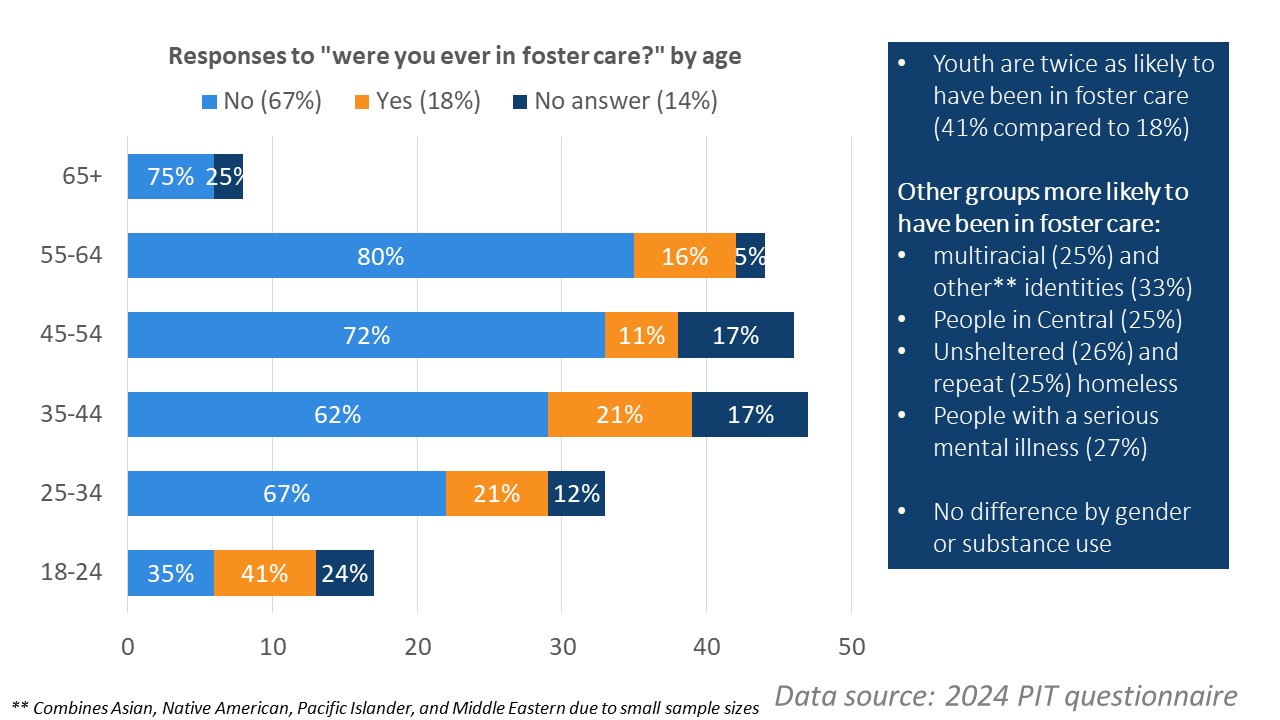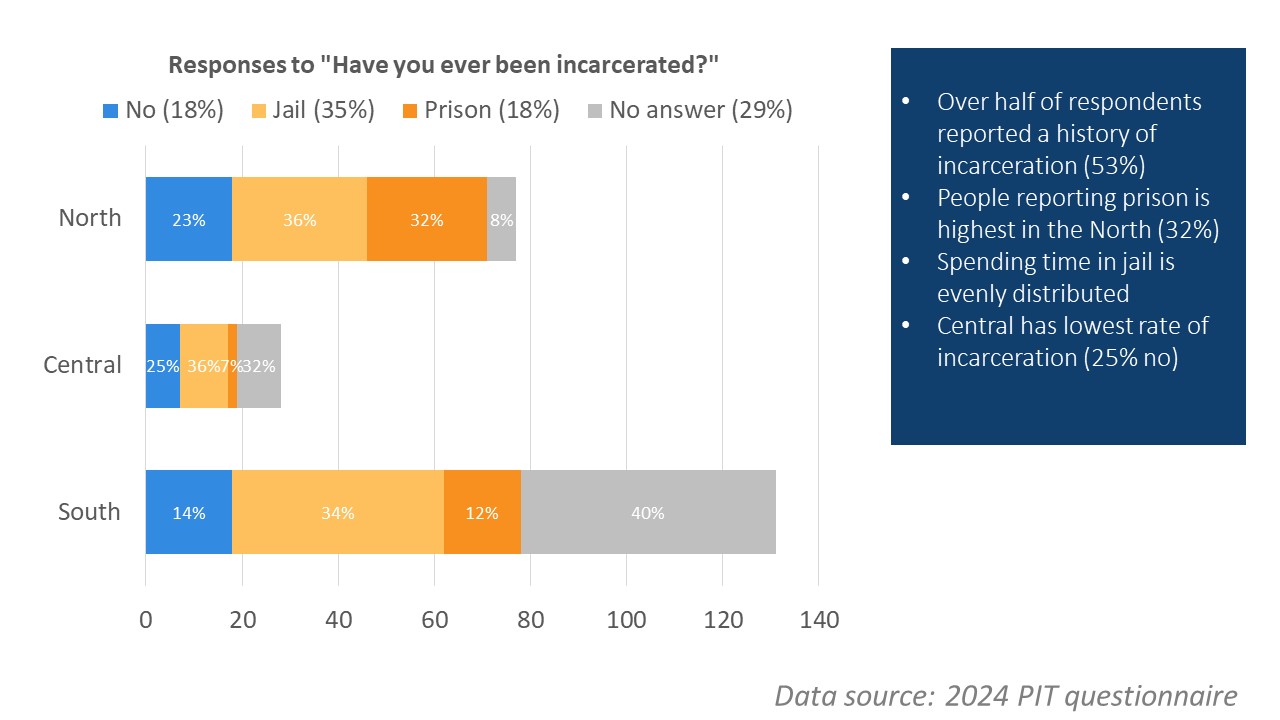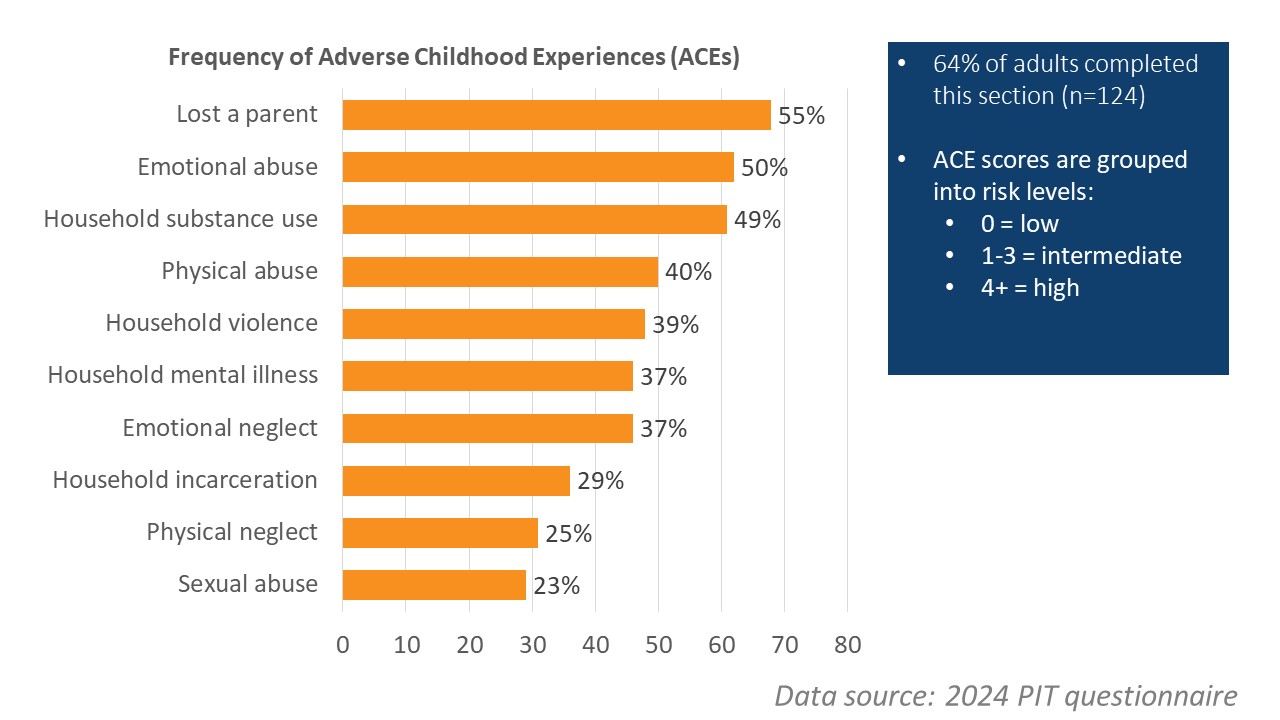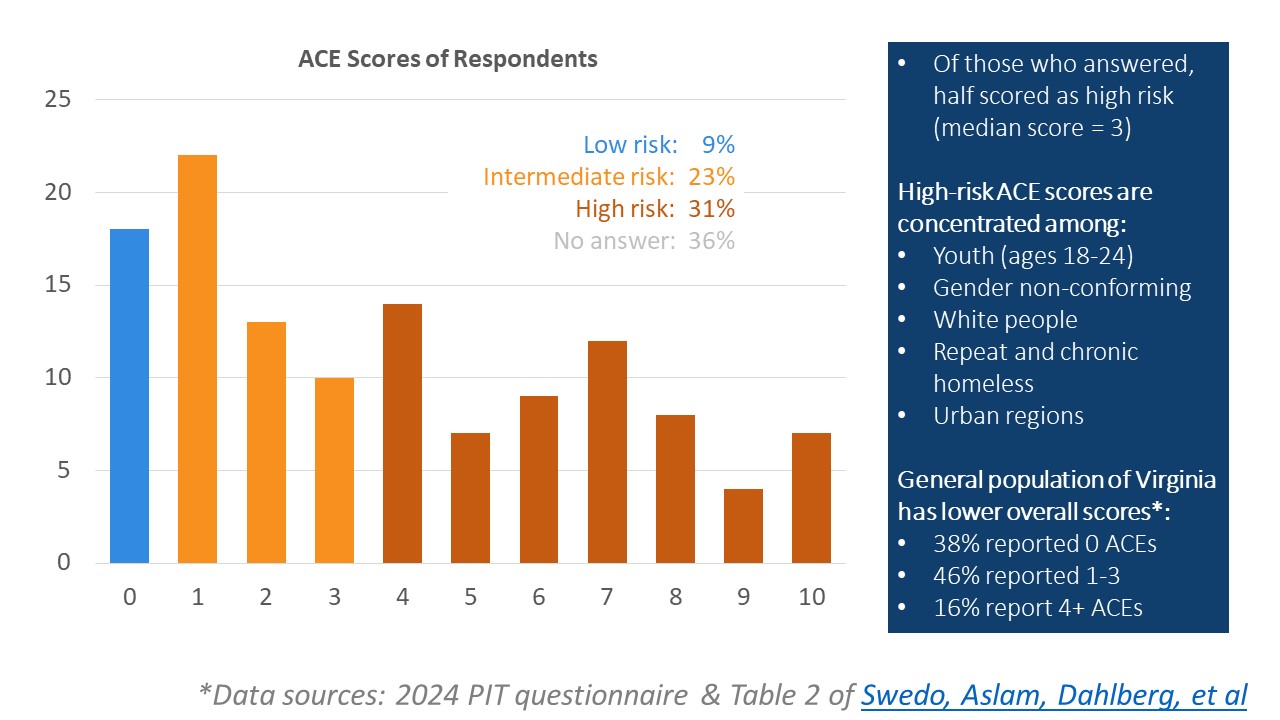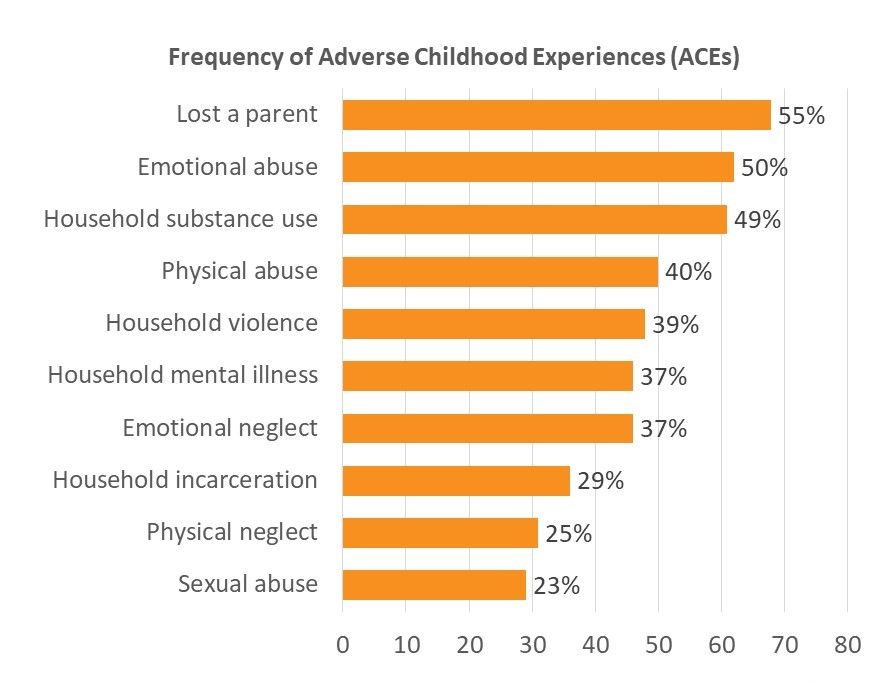What is the PIT Count?
The Point-in-Time (PIT) count is a snapshot of homeless individuals on one night each year, including both sheltered and unsheltered people. HUD requires each Continuum of Care (CoC) nationwide to conduct the PIT count in the last 10 days of January each year.

2017-2020: historically counted about 300 people experiencing homelessness, of whom 10% were unsheltered.
2021: Due to the COVID-19 pandemic, no unsheltered surveying was conducted this year.
2022: COVID funding provided more resources for shelter, resulting in an increased sheltered count.
2023: inclement weather on the PIT count date limited the unsheltered count.
2024: Improved unsheltered outreach in rural areas, creating more accurate picture of unsheltered individuals than prior years.
Where can I get more information?
Results and analysis from the PIT count are presented at the CoC general meeting in April each year. You can view the meeting slides and recordings on our Meetings page. If you have a specific question that you want more information about that is not covered in those slides, please submit a data request form or contact the HMIS administrator directly.
2024 PIT Count Findings
Why is the PIT Count important?
HUD requires all CoCs to report demographic information about who is experiencing homelessness, but our community goes beyond that to ask why people are experiencing homelessness, and what challenges they face.
For example, in 2024 the CoC’s Data Committee revised the PIT survey questionnaire and included a new optional section about Adverse Childhood Experiences (ACEs), which ask about ten experiences people might have experienced as a child. The ACE framework identifies people who experienced 0 ACEs as low risk, 1-3 as intermediate risk, and 4+ as high risk for complicating health outcomes and social functioning.
Of the 195 adult respondents, 124 (64%) were willing to answer these additional questions. Of those who answered, half scored as high risk (32% of the total; see chart on top). In comparison, only 16% of the general population in Virginia reported 4+ ACEs.
The chart on the bottom summarizes what percent of the 124 respondents identified each experience. More than half of the homeless population reported losing a parent to divorce, death, imprisonment, or abandonment, and half reported experiencing emotional abuse. ACEs are a helpful way to identify the underlying trauma and stressors that are contributing to peoples’ homeless experiences.
How does the PIT Count happen?
For sheltered homeless individuals, the PIT count is conducted using the data entered into HMIS by emergency shelters, as well as agency-level reports submitted by shelters that do not participate in HMIS (such as domestic violence shelters).
With the help of volunteers, the CoC collects information about unsheltered homeless individuals by using basic demographic information surveys that are conducted in the 24-hour period around one night in late January.
For more information about how the PIT count happens, please review the PIT Count Methodology, which is annually revised by the CoC’s Data Committee and approved by the Executive Committee.
When can I help?
You can help the CoC get an accurate count of homeless individuals by signing up to volunteer! Volunteers are needed every January in Harrisonburg, Winchester, Rockingham County, Frederick County, Clarke County, Shenandoah County, Page County, and Warren County. Volunteers are trained on how to conduct surveys in a safe and respectful manner. On the day of the PIT count, volunteers meet as teams to go together to a pre-determined geographic area, where they conduct interviews with individuals at those locations.
For more information, please contact the HMIS Administrator.





















